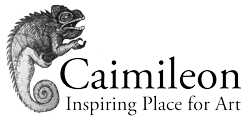Frequently Asked Questions
Workshops:
General glass questions:
I am mainly using two techniques to join the glass pieces of the design together. One is to use adhesive copper foil, used first by Louis Comfort Tiffany in the early 1900s in America. The copper foil is wrapped around the edge of the glass and then later joined together with solder using a hot iron. The other technique, used since the middle ages, is using lead cames, which are cut to size, placed between the glass pieces, entertwining. Later the joints are fixed with soldering. This is the same technique used in church windows
I also teach and work with glass paints made from powder paints and gum arabic, vinegar or water. They are fired in a kiln at around 600 Degrees Celsius. The paint is part of the glass after the firing and will last as long as the glass basically. It can not be scraped off or wiped off with any solutions.
To commission a glass panel, free standing, to be inserted into a window or door (insertion inside double glazing is often used) I need to know what you have on your mind. Have you seen something that you liked? The internet is great for ideas. Or maybe you and/or you family have a special connection to certain places, history, wildlife, legends? Stained glass has always been used to present certain people or families. Many stories are told in church windows or castles. Coming up with a design for a commission is always a process of finding out what you want and what is possible in stained glass. So it starts with a chat or two, some ideas, some sketches until we find the right one for you. Some customers find what they are looking for amongst the pieces I have on offer at my studio and on my website.
My work is occasionally on offer at art galleries or special exhibitions. Customers can visit me at my studio to view glass designs or arrange for a commission (by appointment only). I am setting up a new website for CAIMILEON. My glass designs and my artwork on paper/canvas will be available through a shop on the website.
As the name Lead came suggests, it contains lead and also does the solder. Again some simple rules apply. No food or drink while working in the studio. For the soldering I use an electric…. which filters any fumes.
There are no glass suppliers in the West of Ireland. I have to go to Dublin to have the widest variety of glasses and materials. Since glass is fragile and lead heavy I go to Dublin a few times a year for glass material shopping. Some smaller items or special tools which I can not get in Ireland I order from companies in Germany.
I trained three years as an art glazier at a specialist school in Germany from 1990 to 1993. Training implied glass painting, leading, glass construction, carpentry and picture framing. I am teaching framing and stained glass since 1993.
